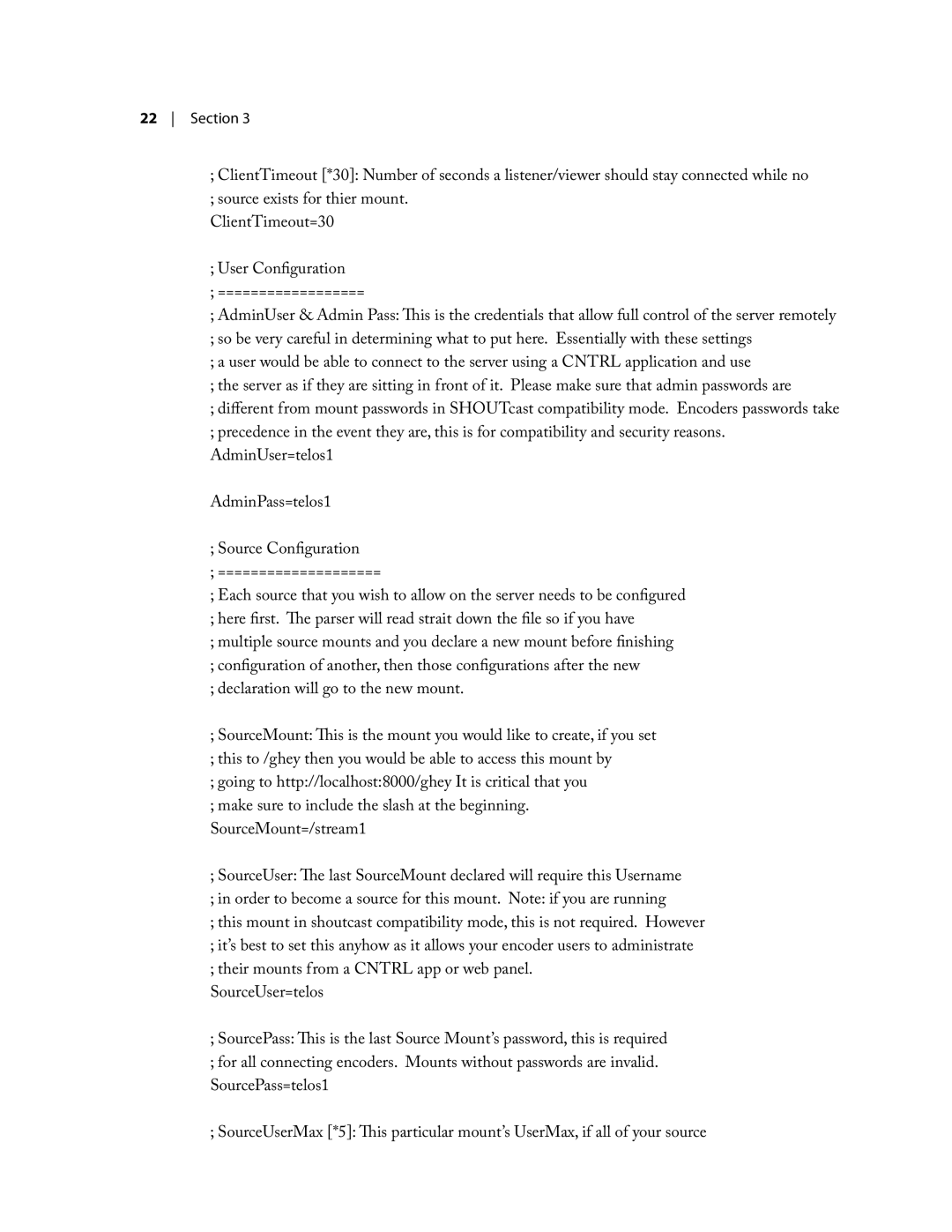22 Section 3
;ClientTimeout [*30]: Number of seconds a listener/viewer should stay connected while no
;source exists for thier mount.
ClientTimeout=30
;User Configuration
;==================
;AdminUser & Admin Pass: This is the credentials that allow full control of the server remotely
;so be very careful in determining what to put here. Essentially with these settings
;a user would be able to connect to the server using a CNTRL application and use
;the server as if they are sitting in front of it. Please make sure that admin passwords are
;different from mount passwords in SHOUTcast compatibility mode. Encoders passwords take
;precedence in the event they are, this is for compatibility and security reasons. AdminUser=telos1
AdminPass=telos1
;Source Configuration
;====================
;Each source that you wish to allow on the server needs to be configured
; here first. The parser will read strait down the file so if you have
;multiple source mounts and you declare a new mount before finishing
;configuration of another, then those configurations after the new
;declaration will go to the new mount.
; SourceMount: This is the mount you would like to create, if you set
;this to /ghey then you would be able to access this mount by
;going to http://localhost:8000/ghey It is critical that you
;make sure to include the slash at the beginning. SourceMount=/stream1
;SourceUser: The last SourceMount declared will require this Username
;in order to become a source for this mount. Note: if you are running
;this mount in shoutcast compatibility mode, this is not required. However
;it’s best to set this anyhow as it allows your encoder users to administrate
;their mounts from a CNTRL app or web panel.
SourceUser=telos
;SourcePass: This is the last Source Mount’s password, this is required
;for all connecting encoders. Mounts without passwords are invalid. SourcePass=telos1
;SourceUserMax [*5]: This particular mount’s UserMax, if all of your source
